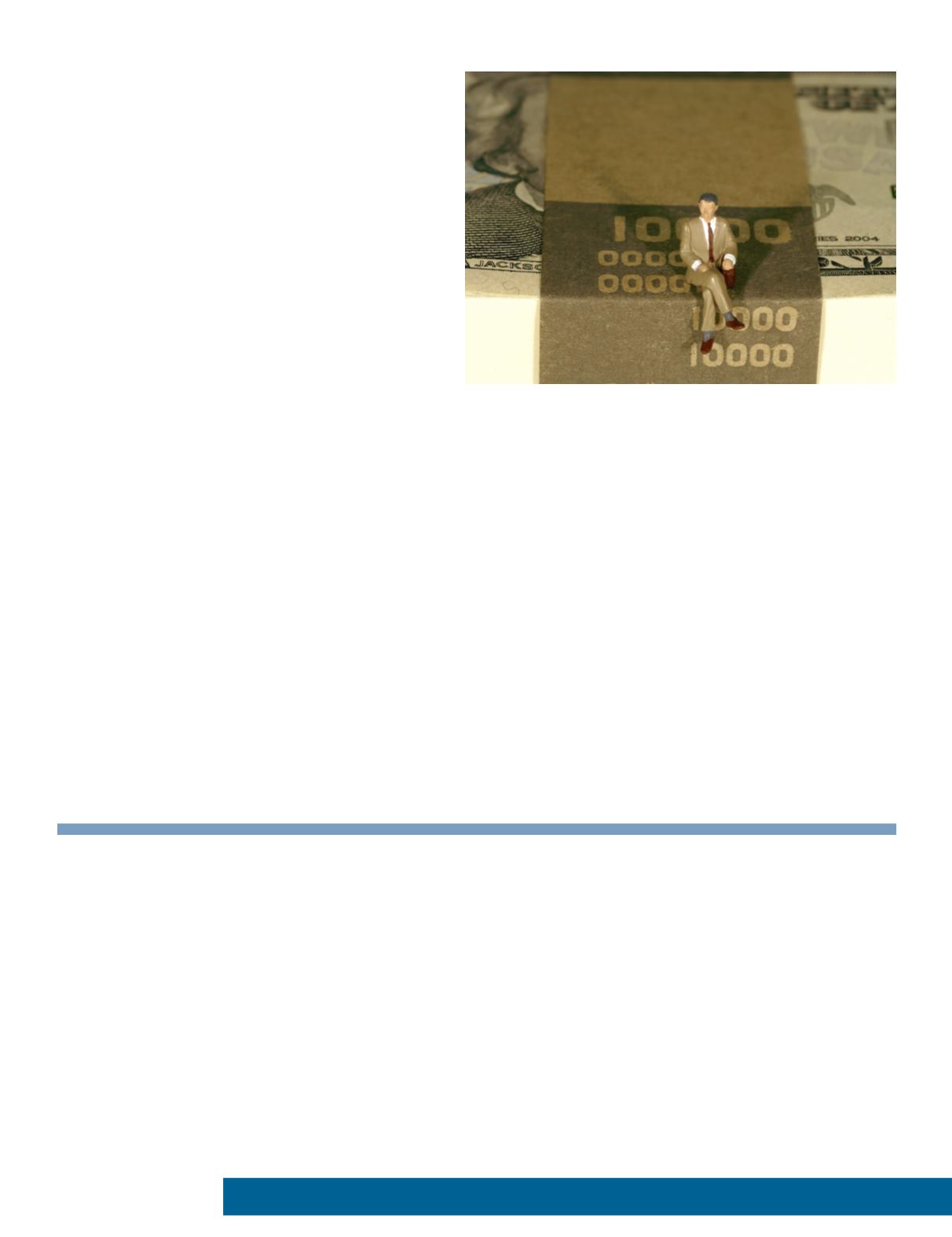

nity and industry, and ego. Here is a recurring
conversation we have with owners:
“We have been in business for 25 years …We’re the
best distributor… I was president of our regional
association …Our sales were $3 million a couple
of years ago. What is my company worth?”
Which of these elements contributes to
financial value? Actually, in and of them-
selves, none of them provide value. Value is
based solely on the qualities that can reason-
ably contribute to
future
earnings.
There are a variety of qualities and met-
rics used to estimate the likelihood of future
earnings. Here are some of the more com-
mon ones.
Historical Earnings
This is the most important metric.
Owners sometimes claim you can’t determine
the value of their companies by numbers. It’s
their people, their reputations and their cus-
tomers that make their companies valuable.
In some sense they are correct, but only to
the extent that these qualities contribute to
earnings. The best staff and reputation in the
world don’t matter much if the company
doesn’t make much money.
There are four primary elements of his-
torical earnings that are important. The first
is
overall cash flow
. This is sometimes called
free cash or EBITDA (Earnings Before
Interest, Taxes, Depreciation and
Amortization.) Strong historical cash flow is
a positive indicator for future cash flow.
The second element is
gross margin
.
Gross margin is the difference between what
you billed your customers and how much
you paid for the products and services. Total
gross margin rep-
resents the
amount of money
a company has
available to cover
operating
expenses and,
hopefully, con-
tribute to cash
flow (EBITDA).
Gross margin is
important both
in total and in
percentage terms.
For example, a
company that has
$1 million in
total gross margin that is 40 percent of sales
is going to be worth more than a company
that also has $1 million in total gross mar-
gin that is 20 percent of sales.
The third element is the
trend
of the
business. Are sales and gross margin trending
upward and, if so, at what rate? Or, are they
stagnant or headed downward? Without a
doubt, a company with $2 million in gross
margin last year following four years of dou-
ble-digit growth is worth more than a com-
pany with $2 million in gross margin every
year for the past four years, assuming all other
things are equal. Other trends to consider are
cash flow, operating expenses, days in receiv-
able, number of customers, etc.
The fourth element is
stability
. Investors
may enjoy roller coasters at the amusement
park, but not in ownership of companies.
Stability of historical EBITDA indicates reli-
ability and safety.
Customer Base
Many owners develop close, personal
relationships with their customers. They
nurture and grow key accounts that con-
tribute 25 percent of the total company’s
sales and are proud they have been selling to
them for the past 20 years. However, these
accounts don’t necessarily increase a compa-
ny’s value. First, if the relationship is tied
too closely to the distributor owner, that 25
percent of the sales may be at risk if the
owner sells, retires, goes elsewhere or dies.
This reduces the likelihood of future earn-
ings. In the process of focusing on and
growing key accounts, most likely margins
on those accounts have declined because of
the higher volume and the fact that the
owner hasn’t spent as much time acquiring
the new customers necessary for long-term
growth and stability. As a result, the value of
the distributor company may actually be
22 •
PPB
• APRIL 2015
INNOVATE
Four Qualities That May
Decrease
Value
1
Long-term leases.
Owners
lock into leases that are
fixed costs, which can con-
tribute to negative cash flow
during economic and busi-
ness slowdowns.
2
In-house decoration.
Most
distributors outsource
embroidery because it does
not provide a good return
on investment.
3
Customer industry concen-
tration (i.e., financial, real
estate, etc.).
Too much of a
concentration in one indus-
try creates risk if that indus-
try encounters difficulties.
4
Excessive commission plan.
When owners pay sales-
people too much, it sup-
presses profit and is difficult
to change to a more reason-
able plan.
















